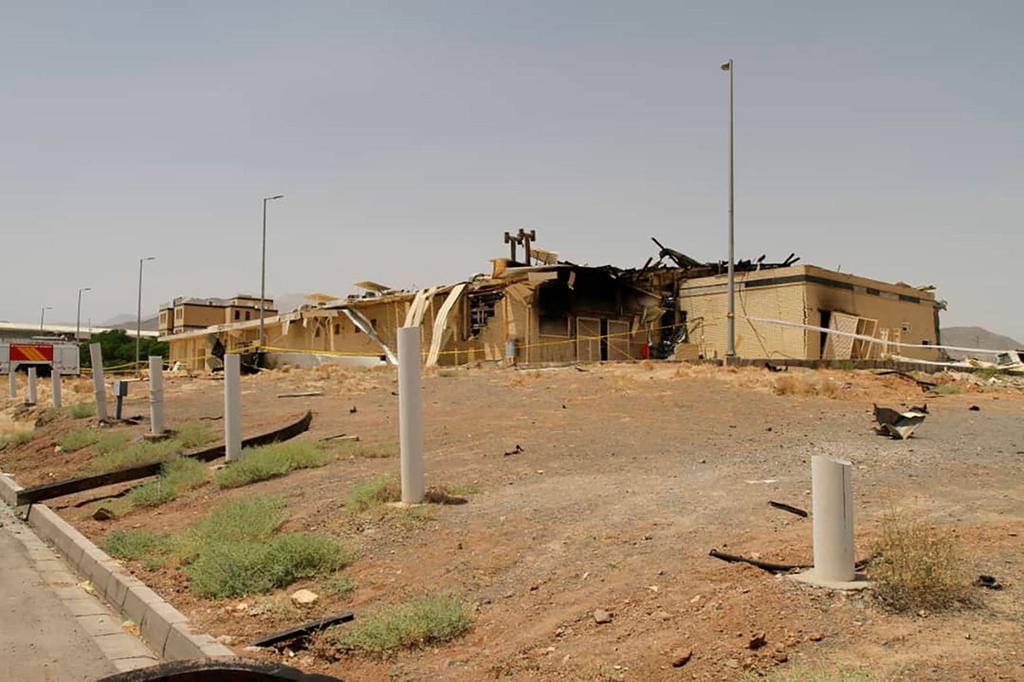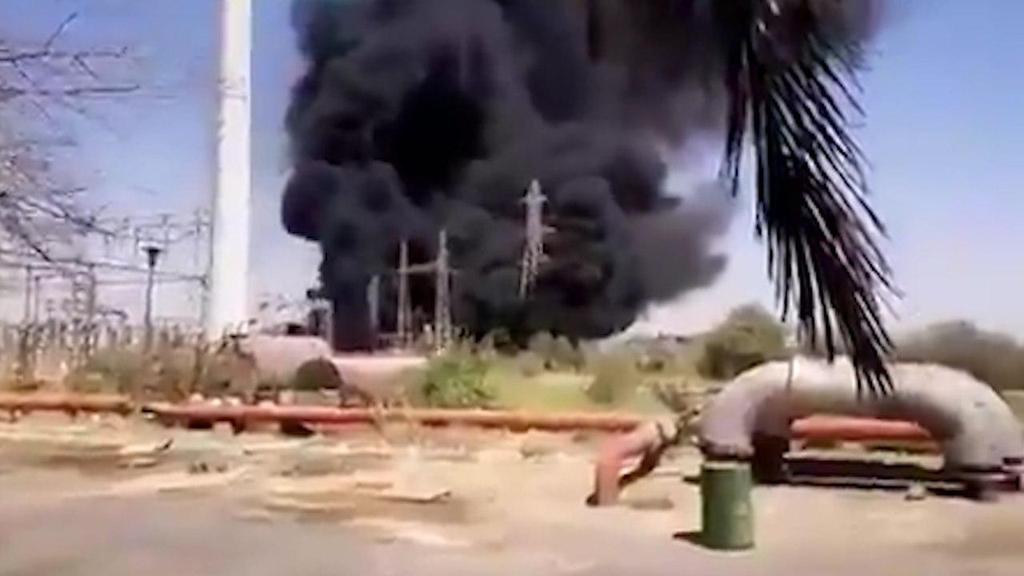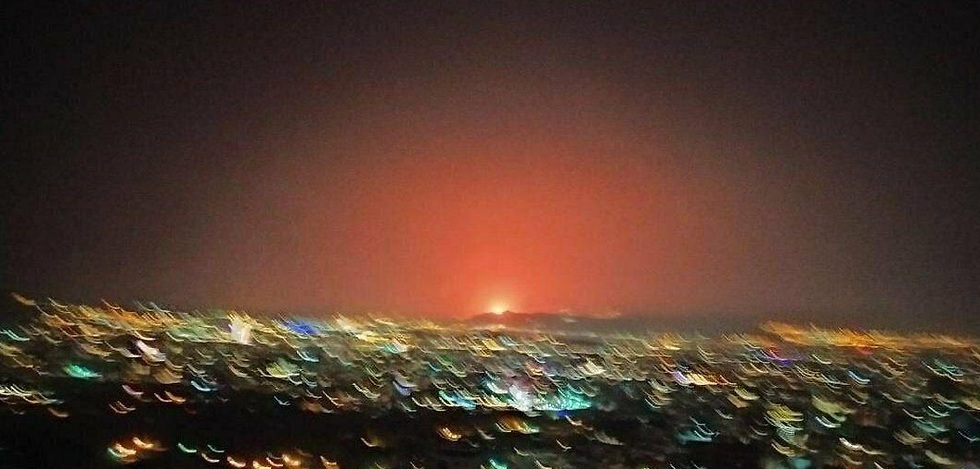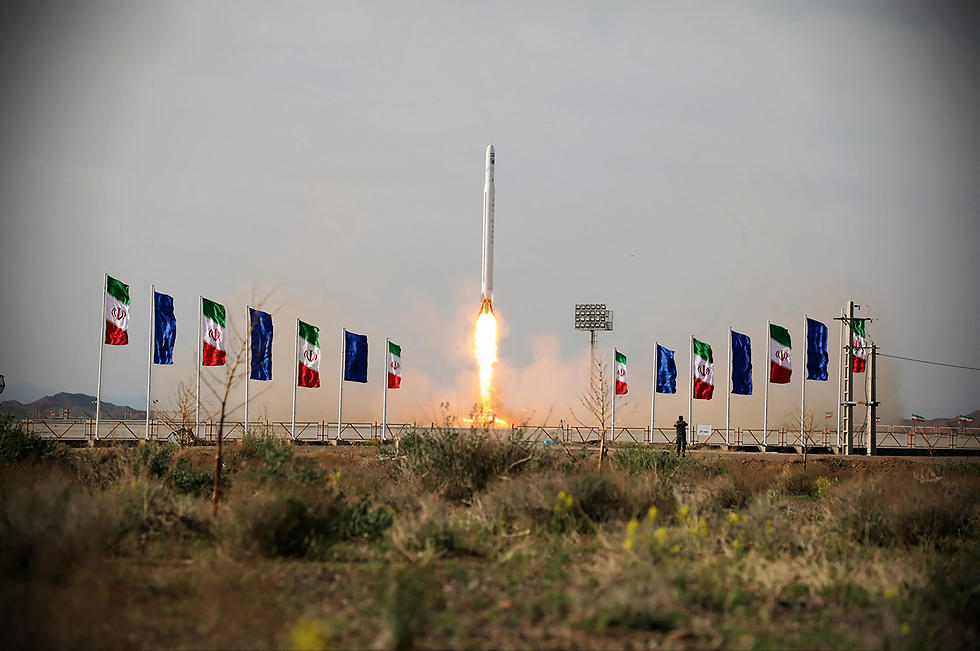Getting your Trinity Audio player ready...
Someone has decided that a window of opportunity has opened in crisis-filled Iran, and it is time to strike while the chance is at hand.
What has transpired at various sites within the Islamic Republic is very reminiscent of a series of alleged Israeli airstrikes against Iranian targets in Syria over the past months.
The Iranians are losing their grip in Syria and this poses an opportunity to push them out, strike at their military facilities and hurt the morale of their proxies in the region.
And with the Islamic Republic in the midst of a severe economic, social and diplomatic crisis, it is an opportunity to undermine the regime, bolster resistance at home and force it to spend its budgets on defense and reconstructions at the expanse of future military projects.
This is the strategy of exploiting weaknesses, and like all other strategies it has it risks, hopefully calculated ones.
With Tehran blaming Israel for attacking the facilities in Natanz and Parchin – Jerusalem must take such accusations seriously.
And it is safe to assume that since the cyber attack on the country's water facilities in April and the alleged response, Israel's defense systems are on high alert for a similar attempt and is probably the only security mechanism within the nation preparing for such a scenario at any moment.
This window of opportunity will only be open until November 3, the date on which the ayatollahs pray will be the moment of U.S. President Donald Trump's removal from office.
Experts speculate that until then, the Iranians will refrain from an open and comprehensive confrontation with Great Satan and its Mideast ally Little Satan.
The common denominator between the various sites recently afflicted in Iran – either by accident or sabotage – is that they are part of the national infrastructure.
Both facilities were part of the Iranian nuclear project - a lab for the development and enrichment of centrifuges at Natanz and a ballistic missile research facility at Parchin.
Even if both sites were subject to cyber attack, it is clear that the damage done will not grind the Islamic Republic's nuclear ambitions to a halt.
According to American intelligence, Iran is today three months away from reaching the goal of having 25 kilograms of uranium enriched to 90%, the amount needed to make one nuclear bomb.
The damage done to the lab in Natanz will barely delay the Islamic Republic achieving this crucial step, with it possessing thousands of "old" centrifuges capable of getting the job done.
It is still difficult to tally the total damage done to the research facility in Parchin, but one should take into consideration Iran's achievement this year of sending a satellite to space.
This is evidence that Tehran already possesses ballistic missiles capable of reaching a distance of at least 2,000 km.
But these incidents, which are being talked about all over the world, are demoralizing Iran, expose the vulnerability of its regime and add to the economic burden the country must endure.
The power infrastructure in Natanz failing and ceasing to work, for example, is another hit to the trust in the regime of the people living there, who are already hostile.
Add to this the fact that the arms embargo against Iran is set to end in four months, and China and Russia are already on the sidelines prepare to line their pockets, and the UN's International Atomic Energy Agency reported last month that Iranian officials are refusing to let inspectors into two suspected facilities nuclear facilities.
Somebody is probably reminding Tehran that there is a price for continued threats against other Middle Eastern nations.





